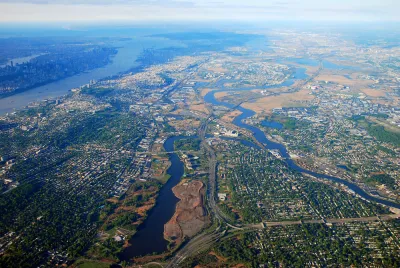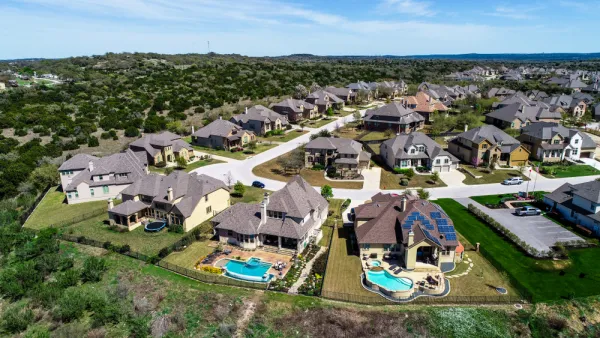A new book outlines the benefits of public investment at the regional scale.

A new book from the Lincoln Institute by Robert D. Yaro, Ming Zhang, and Frederick R. Steiner examines the role of 'megaregions' in shaping the future of U.S. policy and planning. As Will Jason writes, "Megaregions and America’s Future explains the concept of megaregions, provides updated economic, demographic, and environmental data, draws lessons from Europe and Asia, and shows how megaregions are an essential framework for governing the world’s largest economy."
Geared to urban and regional planners and policy analysts, staff and decision makers in transportation, environmental protection, and development agencies, faculty and students in related fields, as well as business leaders, Megaregions and America’s Future includes a case study of the Northeast—the nation’s oldest megaregion and the source of the concept—but delves deeply into every megaregion, from the Great Lakes to the Gulf Coast to Southern California.
The authors argue that a regional approach is more appropriate for large-scale issues such as sea level rise or high-speed rail that require action across a broad geographic area. According to the book, megaregions are "the perfect geographic unit for channeling federal investment and managing large systems such as interstate rail, multistate natural resource systems, climate mitigation or adaptation, and major economic development initiatives."
FULL STORY: New Book on Megaregions Provides a Framework for Large-Scale Public Investment

National Parks Layoffs Will Cause Communities to Lose Billions
Thousands of essential park workers were laid off this week, just before the busy spring break season.

Retro-silient?: America’s First “Eco-burb,” The Woodlands Turns 50
A master-planned community north of Houston offers lessons on green infrastructure and resilient design, but falls short of its founder’s lofty affordability and walkability goals.

Delivering for America Plan Will Downgrade Mail Service in at Least 49.5 Percent of Zip Codes
Republican and Democrat lawmakers criticize the plan for its disproportionate negative impact on rural communities.

Test News Post 1
This is a summary

Test News Headline 46
Test for the image on the front page.

Balancing Bombs and Butterflies: How the National Guard Protects a Rare Species
The National Guard at Fort Indiantown Gap uses GIS technology and land management strategies to balance military training with conservation efforts, ensuring the survival of the rare eastern regal fritillary butterfly.
Urban Design for Planners 1: Software Tools
This six-course series explores essential urban design concepts using open source software and equips planners with the tools they need to participate fully in the urban design process.
Planning for Universal Design
Learn the tools for implementing Universal Design in planning regulations.
EMC Planning Group, Inc.
Planetizen
Planetizen
Mpact (formerly Rail~Volution)
Great Falls Development Authority, Inc.
HUDs Office of Policy Development and Research
NYU Wagner Graduate School of Public Service




























